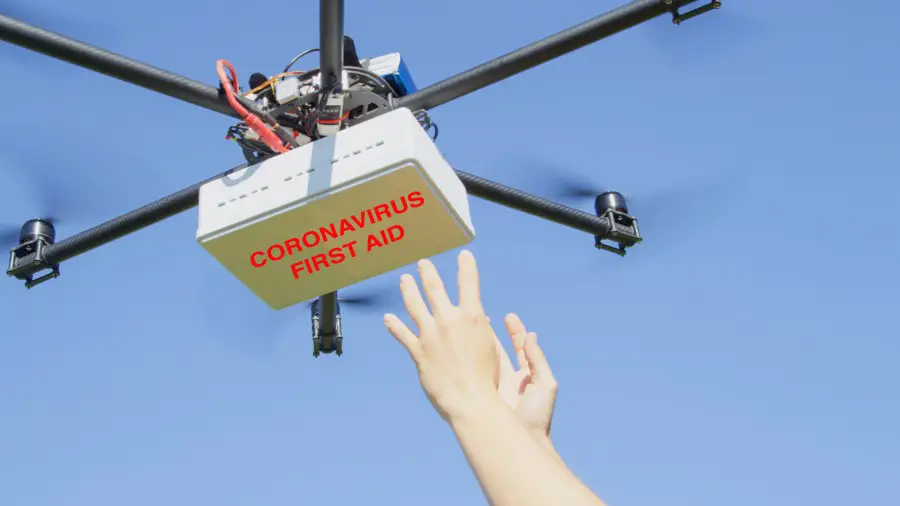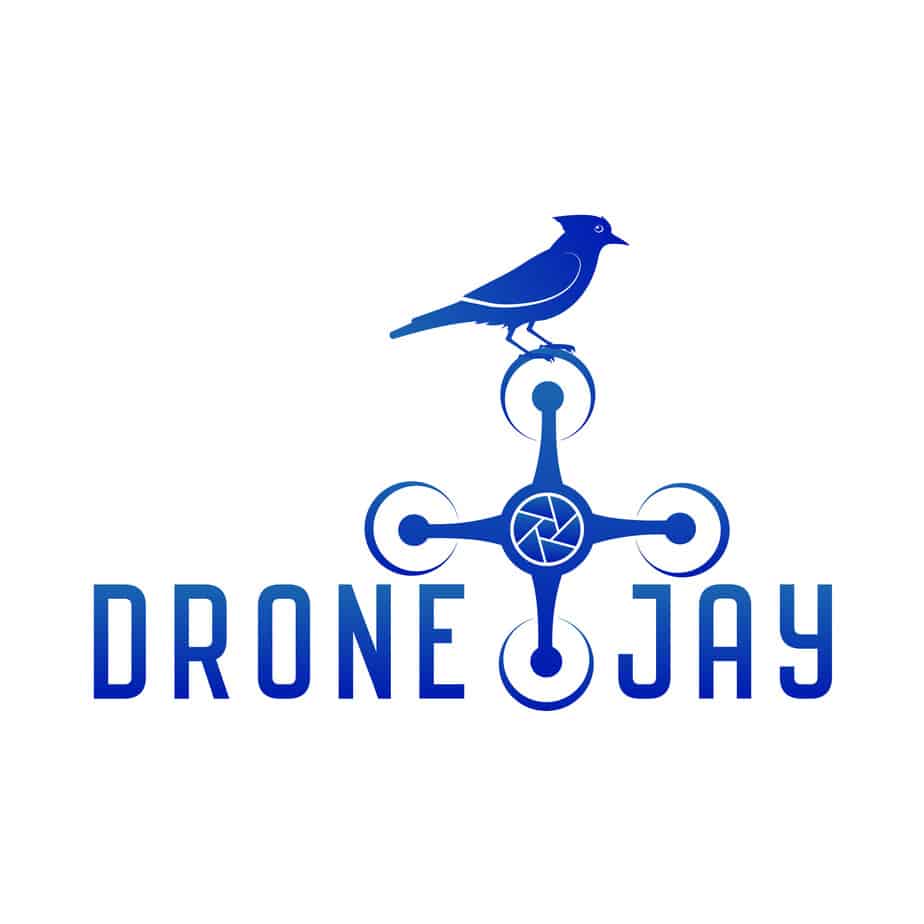With hundreds of thousands of people at risk for contraction, one of the number one ways to mitigate the spread of a virus is to make sure people do not come in contact with those already infected. This is where drones have a serious advantage, as they can cover a large distance and work closely with professionals without having to risk human to human transmission.
Drones are helping fight the Corona Virus by spraying disinfectant, policing gatherings from the air, and delivering samples across the sky.
Areas in China are already implementing drones to help combat the virus, and there will be continuous innovation as the crisis continues that will translate to other industries over time. Already we are seeing advancements in chemical spraying, thermal mapping and modifications to improve flight time for long-range deliveries.
It could open the door to new laws surrounding drones as well, some good, some very controversial. With the need to deliver supplies at an all-time high there is a path towards autonomous delivery going forward.
There is also the need for surveillance, in fact, one of the first major operations for drones in China was a mass surveillance mission. 100s of drones were used to identify and track people who were at risk or not following the rules. While that is good for the time being, it’s certainly better to watch for potential outbreaks remotely, there could be serious implications in the future when the police continue to use drones to spy on people.

No matter what we are witness to a very interesting event. This will be the first time we have a world crisis and drones at our disposal, and how we utilize them will shape the public perception of drones for a long time to come. If we are able to prove that drones are an invaluable asset to managing a crisis, it will transform into an opportunity for drone pilots and even create new markets and organizations within the government.
The following are the methods we are already using to help medical and emergency crews towards reaching that goal.
Drones Spraying Disinfectant
The farming industry has used drones to spray fertilizer and pesticides for years, so spraying disinfectant was a natural step. Large drones can hold tanks containing all manner of liquid and have sprayers specifically designed to aerosolize material and blanket a large area or concentrate on pinpoint targets.
Currently, China has released official guidelines on how to effectively use the drones to combat the spread of the virus, primarily by spraying the areas between infected and non-infected sections. The drones can also spray along streets above traffic and obstacles, able to cover many times the distance of a truck or person on foot.
Process
The process is fairly simple since the technology already existed for agriculture. A drone outfitted with the sprayer is loaded with disinfectant and an operator draws a path for the drone to follow. Most drones have sophisticated object avoidance, so the operator can be confident in the maps they create and quickly get the UAV in the air.
One operator can control multiple drones using the same transmitter reducing the demand for personnel. By coordinating with other operators in the area and being responsive to changing conditions a team may have multiple drones in the air, all following their own independent routes, covering miles of surface area. In the Shandong province, it was reported that a team was able to disinfect an entire community in under 4 hours.
Watching these behemoths flyby is a futuristic view of what is to come
Equipment
Most consumer-level drones can not lift a tank of disinfectant, however, and that’s where specialized platforms like the DJI Agras T16 come in. DJI has offered ag drones for a long time, with modified Phantoms holding small water tanks among the first dedicated farming drones released nearly 10 years ago.
Nowadays the Agras is a 6 motor carbon fiber behemoth that can carry multiple batteries and hold 16 liters of liquid, and it folds up for easy transportation. That makes the T16 incredibly useful for rapid deployment, it can fit in most emergency vehicles and begin spraying quickly. The T16 is the replacement for the massive 8 rotor MG series seen in many videos coming from China, and is already proving itself as one of the frontrunners in the field.
Effectiveness
The effectiveness of spraying disinfectant is debated. The virus has been shown to degrade when in contact with many disinfectants, especially when on surfaces. Since the virus can remain airborne for a few hours and remain on some surface for days, disinfecting large areas will neutralize the virus where it is sprayed.
What is debated is the effectiveness of using the resources to bother disinfecting the outdoors at all. Since UV light is also shown to damage the virus, and since most people do not regularly put their face against buildings and streets, the risk of contracting the virus just by being outside is very low. That means spraying large areas may be doing little to limit the risk of contraction.
Compounding the issue is that a common disinfectant being used is bleach, which can cause health issues by itself and may not kill the virus.
Drone Policing
China has very strict rules they set in place to contain the coronavirus, including curfews, mandatory masks, and quarantines. With a population so large it is impossible to monitor everyone, a task made even more difficult since having officers on the street would put them at risk of infection.
Monitoring
Since drones can cover large distances and even the cheapest consumer drones have decent cameras it was a logical choice to use them to monitor people. The drones can fly autonomously and alert the police to situations using software like facial recognition to detect a maskless person.
There is speculation that software is being used that can detect sneezing and coughing, though it is not confirmed. Police can then decide how to respond, using the drones to track the person’s movement and determine if they are going to be a risk to other people.
The police and health officials are also using drones equipped with thermal imaging to monitor crowds. By comparing relative body heats an operator can identify a person with a fever and single them out as a person at risk of having the virus. This is useful not just on a personal level, where they can remove the infected from the crowd and mitigate risk, but also on a major scientific level.
The data recorded helps study the way the virus spreads and how people react, much of the data being gathered by drones during this time will be studied for years to come in order to help prevent this scenario from occurring again.
Communication
One other way drones are being used by police and other officials is simply as a communication device. Drones outfitted with loudspeakers can fly through the streets and deliver messages and inform the public of changing conditions.
Doctors can fly a drone to remote areas and give instructions, police members can fly close to people who don’t follow the rules and remind them to comply, and politicians can speak directly to areas that might otherwise be cut off from announcements.
Drone Delivery
Drones being used to transport things is an often talked about idea, including the more mocking pizza delivery or the infamous Amazon Prime delivery drones. But in China, drones are out there making deliveries that save lives. Drones fly above the streets, don’t need a driver, and can easily carry medicine. This is why companies like Antwork began working with hospitals immediately to create dedicated routes and drones painted with medical markings.
One of the best utilizations has been the transportation of samples from remote areas to hospitals for testing. Drones ensure that transportation workers are not put at risk and can deliver the samples a lot faster than a car could. Since the samples are lightweight and small, consumer-level drones can be used which makes it an available solution everywhere.
In the Xinchang province, there are even specific drone stations just for transporting samples and medicine between hospitals where drones follow routes like busses around the clock.
The Chinese government has made special allowances and created airspace management, like control towers for airlines, to keep the drones in the air and the hospitals working as efficiently as possible. Some large hospitals are seeing 20 or more drone flights a day, so the necessity to work with the government and avoid interfering with other operations became reality. It will be interesting to see if these new agencies continue and open new opportunities for drone operations in the future.
It isn’t only the medical companies utilizing drones for delivery. Some companies are using drones to deliver valuable supplies like food and water to remote regions. A journey that could take half a day driving on dirt roads only takes a drone half an hour and frees up the delivery driver to focus on local areas.
Drones can also distribute goods from a central point easily, landing and picking up cargo to be dropped off on rooftops. The government has made special commercial lanes just for these kinds of drones, if they prove effective we will likely be seeing them for a long time to come. E-commerce company JD has already created and deployed teams to oversee the deliveries, undoubtedly many other companies will follow.
If nothing else the use of drones during this crisis proves one thing: Drones are now part of our life and economy. No matter what the future holds we can be sure that there will be more of a need for operators and innovation in the UAV world. China has proven it is possible to drag a reluctant government into the future and work with drone manufacturers and businesses to solve problems.
